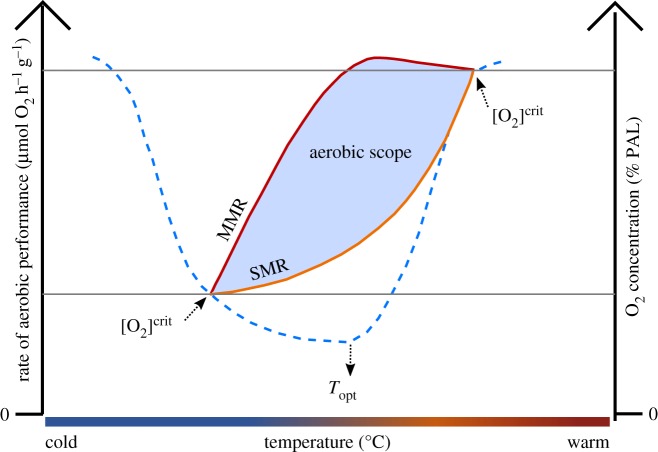Figure 1.
Conceptual model of how temperature and ambient O2 interact to constrain aerobic performance in ectothermic animals. Aerobic scope is defined as the difference of rates of aerobic performance (left axis), specifically between maximum metabolic rate, MMR, and standard metabolic rate, SMR. Tolerance to low O2 levels decreases at temperatures both below and above Topt, as O2 supply capacity falls relative to O2 demand, resulting in [O2]crit occurring at progressively higher ambient O2 tensions (blue dashed line, right axis). Because Topt represents maximum rate of aerobic performance (the greatest distance between MMR and SMR on the left axis), it also corresponds to the [O2]crit minimum (on the right axis). As low ambient O2 reduces aerobic scope by lowering MMR, it consequently narrows the thermal window of environmental O2 tolerance because any temperature-related increase in SMR or reduction in MMR will consequently take up a larger proportion of aerobic scope. Figure adapted from [46].

